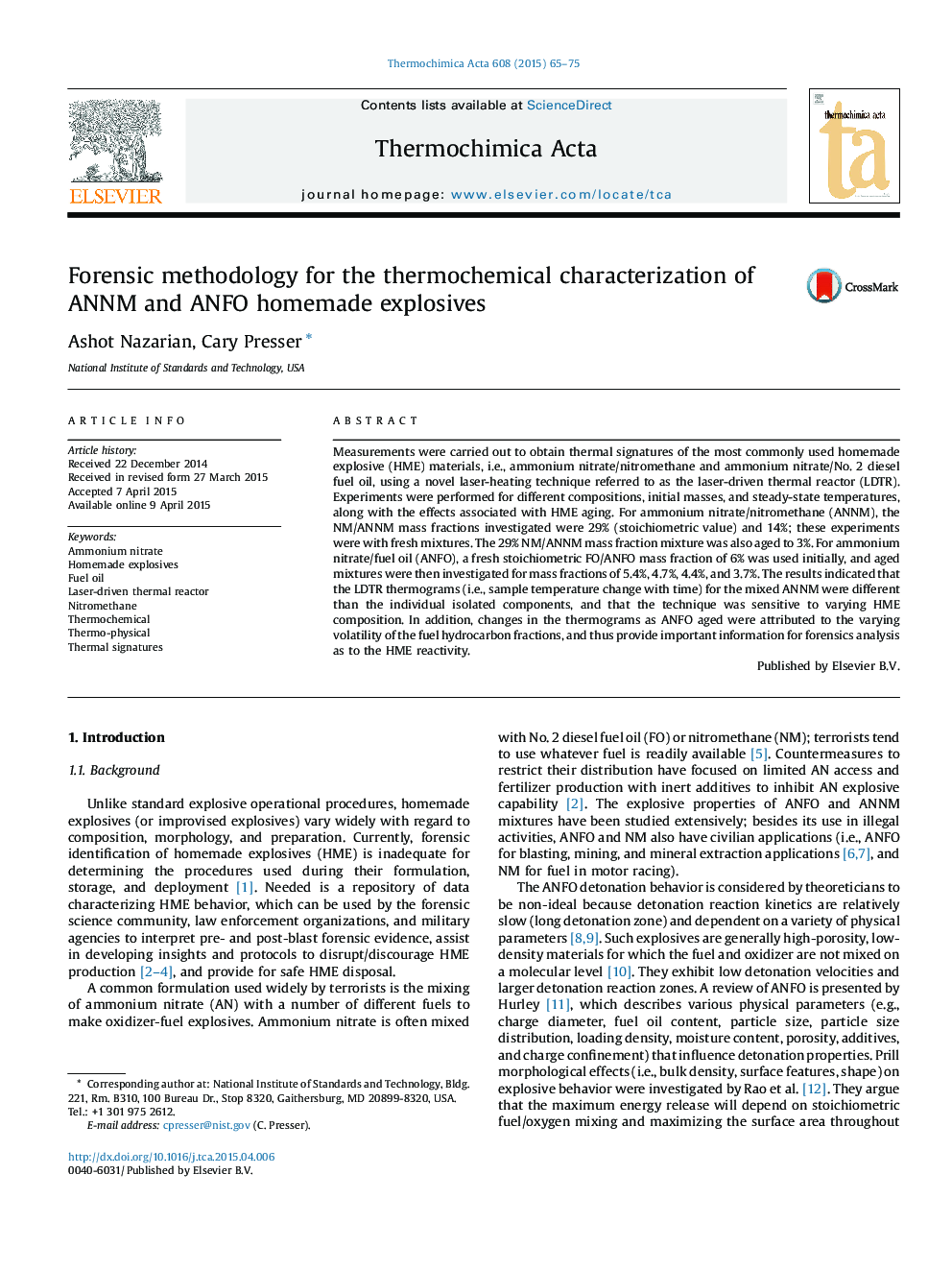| Article ID | Journal | Published Year | Pages | File Type |
|---|---|---|---|---|
| 673118 | Thermochimica Acta | 2015 | 11 Pages |
•The LDTR is a useful diagnostic for characterizing HME thermochemical behavior.•ANNM thermograms indicated sensitivity to varying HME composition.•ANFO measurements demonstrated sensitivity to fuel hydrocarbon volatility.•Mixture preparation time can be defined by studying vaporization effects on mass.
Measurements were carried out to obtain thermal signatures of the most commonly used homemade explosive (HME) materials, i.e., ammonium nitrate/nitromethane and ammonium nitrate/No. 2 diesel fuel oil, using a novel laser-heating technique referred to as the laser-driven thermal reactor (LDTR). Experiments were performed for different compositions, initial masses, and steady-state temperatures, along with the effects associated with HME aging. For ammonium nitrate/nitromethane (ANNM), the NM/ANNM mass fractions investigated were 29% (stoichiometric value) and 14%; these experiments were with fresh mixtures. The 29% NM/ANNM mass fraction mixture was also aged to 3%. For ammonium nitrate/fuel oil (ANFO), a fresh stoichiometric FO/ANFO mass fraction of 6% was used initially, and aged mixtures were then investigated for mass fractions of 5.4%, 4.7%, 4.4%, and 3.7%. The results indicated that the LDTR thermograms (i.e., sample temperature change with time) for the mixed ANNM were different than the individual isolated components, and that the technique was sensitive to varying HME composition. In addition, changes in the thermograms as ANFO aged were attributed to the varying volatility of the fuel hydrocarbon fractions, and thus provide important information for forensics analysis as to the HME reactivity.
